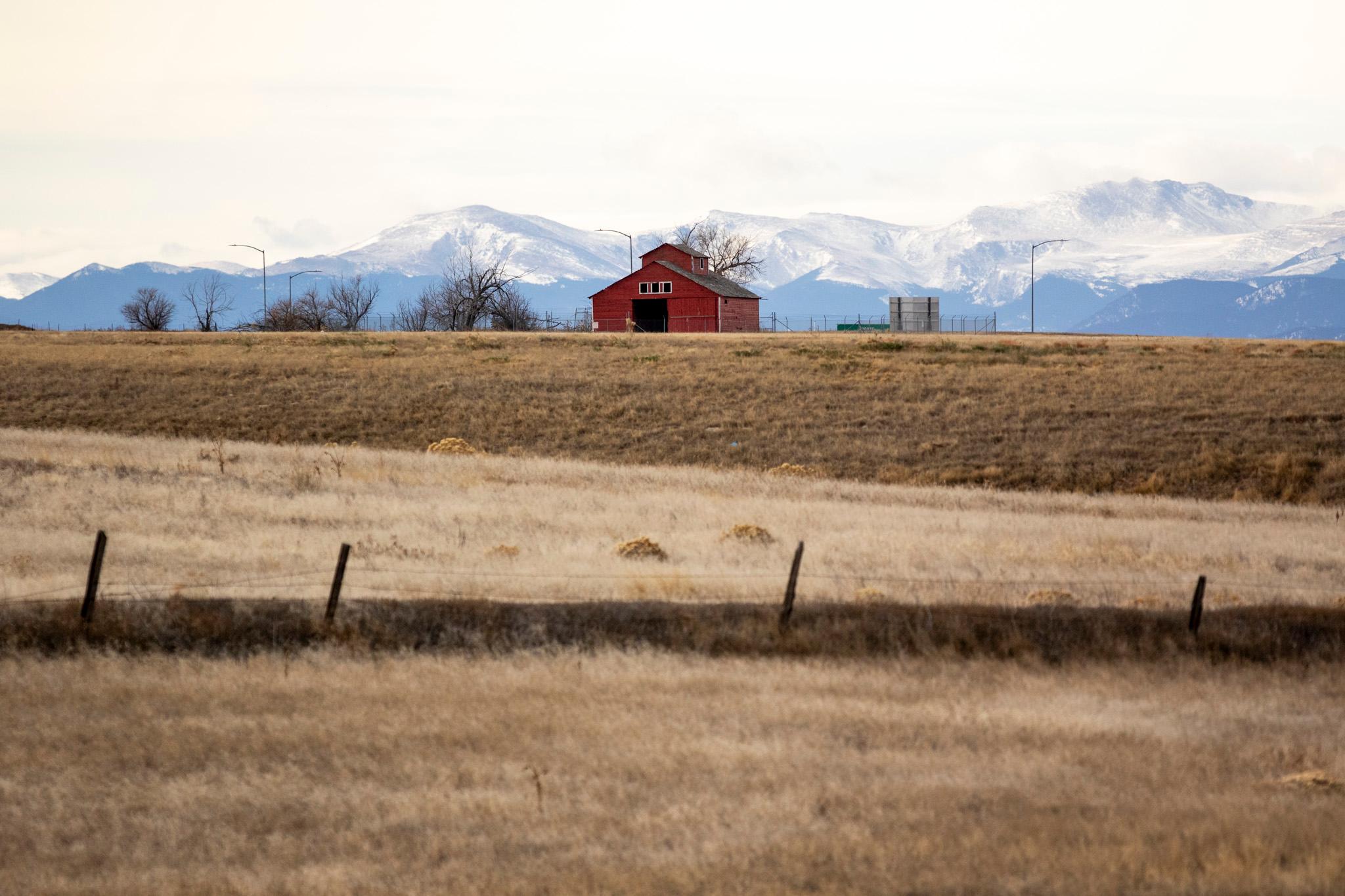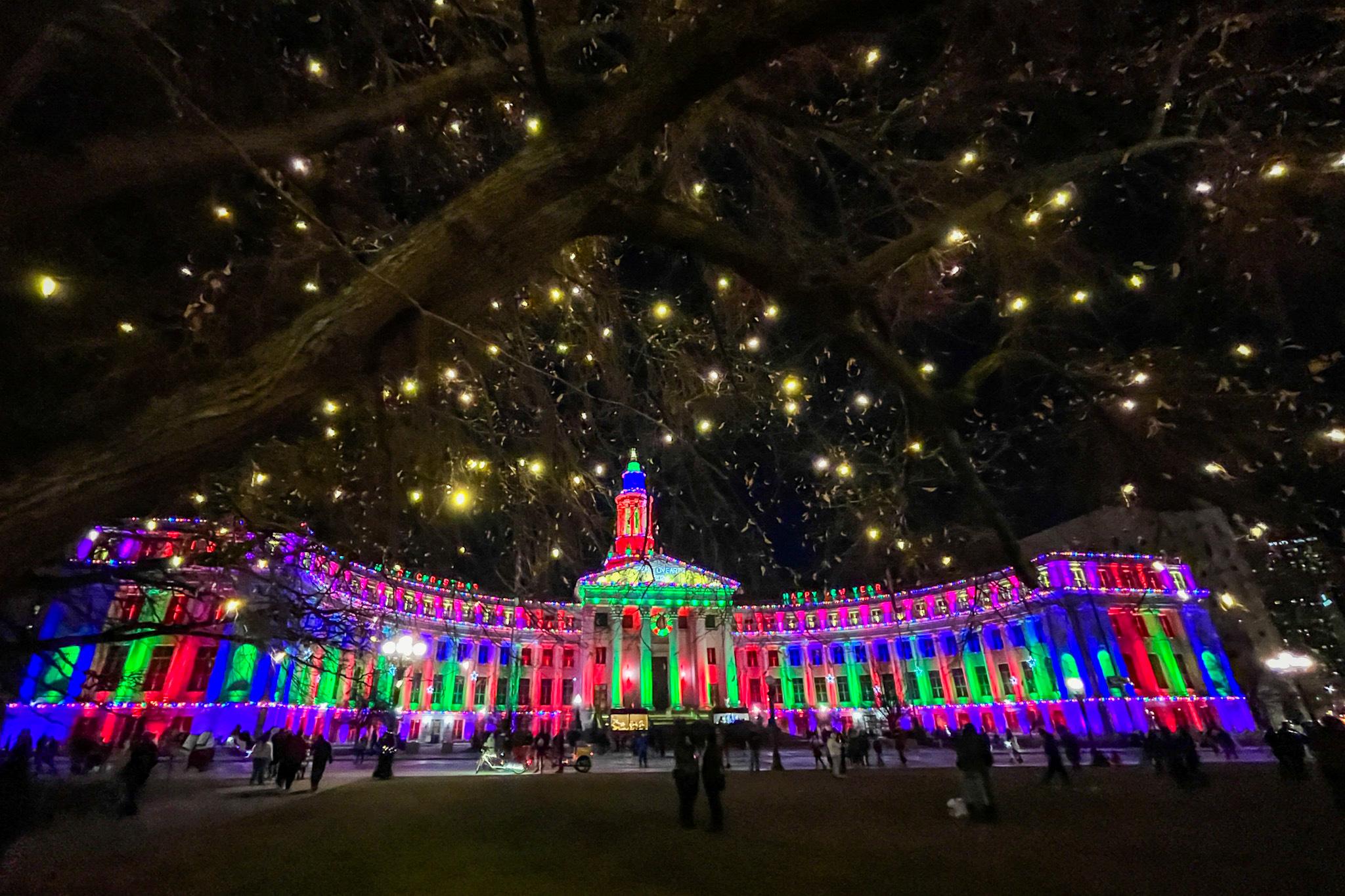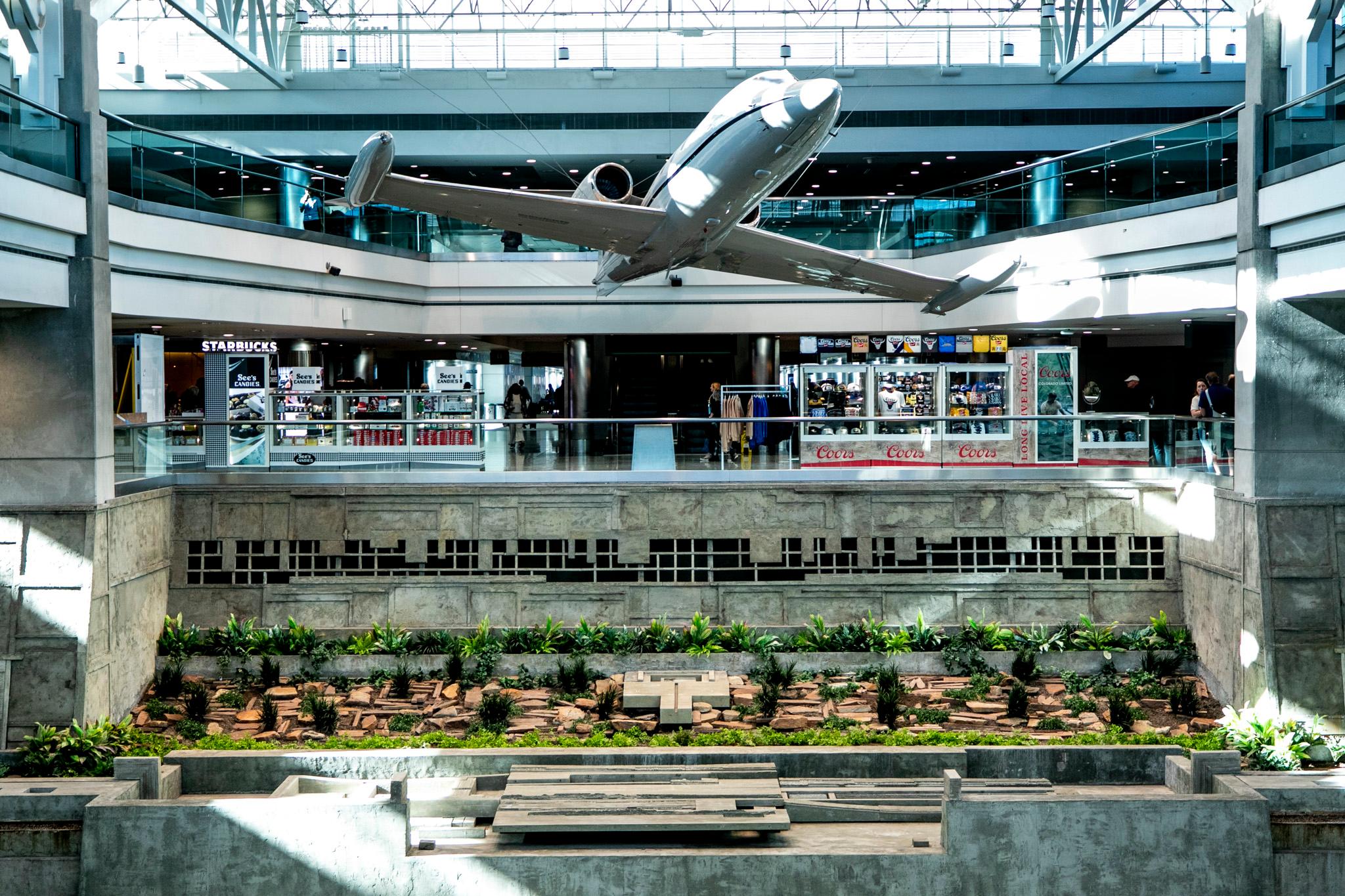Through Sunday night, the inaugural Spirit of Japan Festival is happening in Sakura Square. The event showcases Japanese food, spirits and — the star of the show — sake.
We met with the event’s sake sommelier, known as a kikisake-shi in Japanese, ahead of the event.
Without further ado, Denverite presents Sake 101 with master sake sommelier Adam Boggeri.
What is sake?
It’s not wine, it’s not liquor and it’s not beer — but the fermentation process is closest to that of beer.
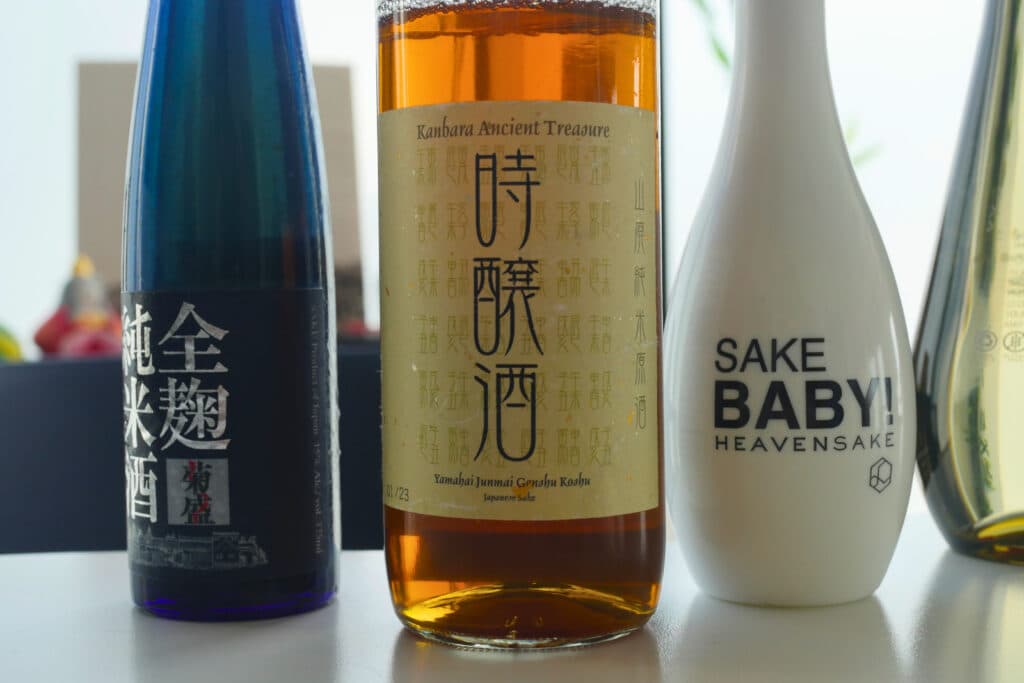
By law, all sake in Japan can only have four ingredients, with the caveat that a fifth is sometimes allowed.
“Sake can only have rice, water, koji mold, and yeast,” Boggeri explained. The fifth ingredient is jozo, a brewer's alcohol. It’s like Everclear or moonshine — strong and tasteless.
The purpose of including jozo is not to make the sake stronger, it’s to clarify the flavors in the brew.
Let’s talk classifications and types of sake.
The two classifications that sake falls under are “premium” and “table.” If you’re drinking sake in America, it’s most likely a premium brand. Table sake is kind of like the Carlo Rossi wine (very cheap and comes in a jug) of sake, Boggeri explained. It can have additional ingredients and is lower quality.
If we’re talking premium sake (which, for the rest of this article, we will be) there are two predominant types: junmai and ginjo.
Boggeri said his pro tip for beginners is to focus on those two words.
Junmai means pure rice and “ it's going to be savory, lactic, umami, grainy, funky, earthy, those kind of notes.”
On the other end of the spectrum, ginjo means tropical fruit and “that's what you get your fruity, your floral and your herbal” flavors.
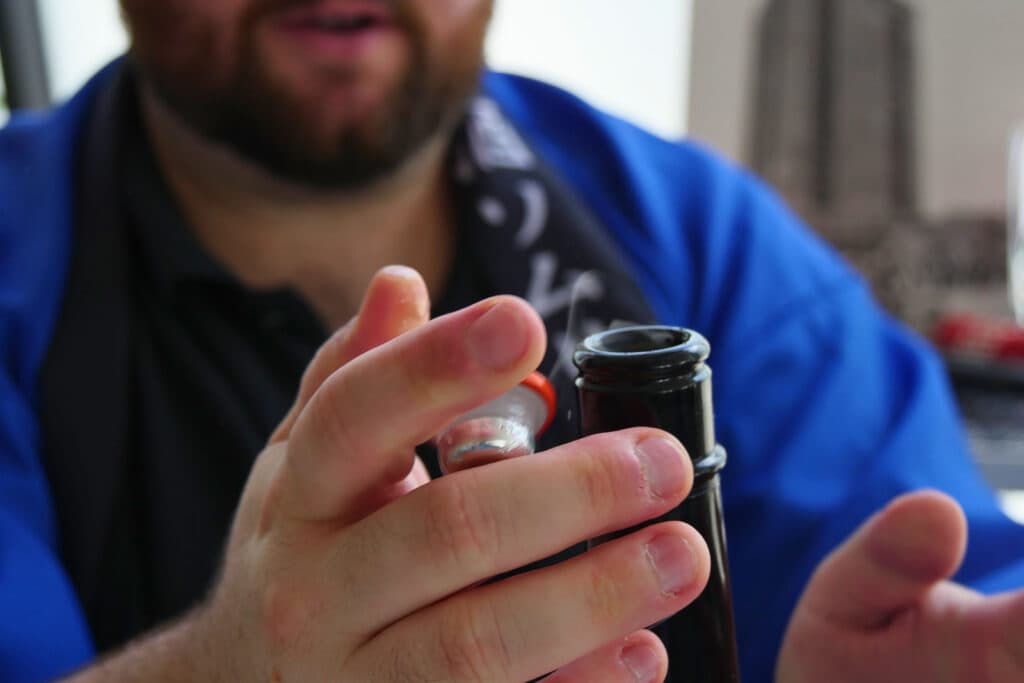
“There's a saying that every bottle has four different sake in it,” Boggeri added. There’s “like 20 minutes out of the fridge room temp, cool room temp, warm room temp and hot, like a cup of tea.”
At each temperature, the sake will taste different. “If you have a sake you don't really like, try a different temperature. If a [food] pairing doesn't work, try a different temperature.”
‘Comparing it to wine is probably the easiest way to do it.’
Boggeri said sake can seem intimidating because of the unfamiliar terms and Japanese characters on the bottles. But he assured “it really is the easiest thing to taste.”
“Wine is very hard to learn how to taste in the beginning, and then it's kind of easy to master,” Boggeri said. “With wine you have so much wine-ness to it that a lot of people are like, ‘Oh, do you taste chocolate?’ And it's like, ‘No, I just taste wine.’”
“With sake. It's kind of the opposite. As soon as you open sake, you will taste apple, pear, melon, things like that, they'll slap you right away.”
Boggeri teaches sake tasting using a sheet of terms called a lexicon.
“I use a sheet that has things like apple, pear, banana. If you have that kind of list in front of you, when you go to taste something you can go, ‘Do I taste apple? Yes or no? Do I taste pear? Yes or no?’”
Boggeri said he grew up 20 minutes outside of Napa, California, so he’s deeply familiar with wine culture. But he said it always baffled him.
“I hated going places where it was like, ‘Oh, it tastes like moss on a northern slope at 9 a.m. in the summer.’ And it's like, ‘No, I don't know what deer hoof tastes like. I don't know what things like that are.”
With sake, Boggeri said, “There is no — I don't want to say snobbery, because I don't want to bash the wine people — but there's no extra complexity.”
How to pour and drink sake — the polite way.
“The Japanese are very big on showing appreciation and showing how grateful they are for your business,” Boggeri explained. “In Japan, they'll fill your cup as high as they can. That's the big thing, get it as high as possible. If they really want to just wax how much they're happy you're here, they will overflow the cup.”
That’s when a masu, or box-shaped cup, comes into play. If you put a small sake glass in a masu, you can pour the cup ‘til it overfloweth, without wasting sake.
(Fun fact: masu cups weren’t originally designed for drinking. They are traditional measuring cups that mete a single-person portion of rice. But we’ll save the history lesson for sake 201.)
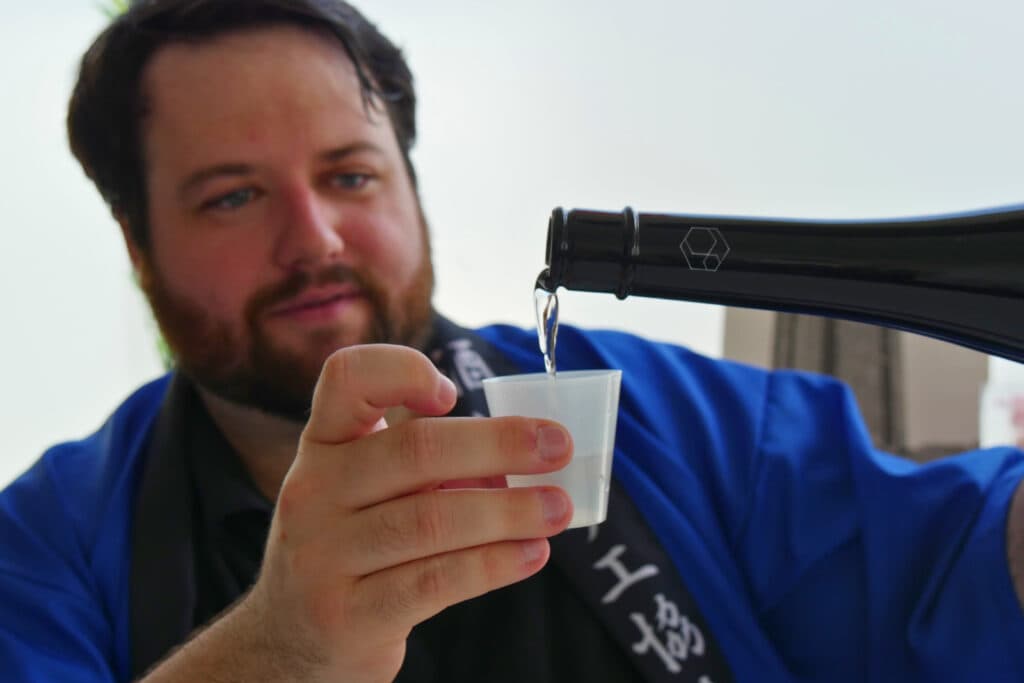
Master sake sommelier Adam Boggeri pours a taste of Heavensake's "Junmai Daiginjo Noir." Aug. 23, 2024. Lauren Antonoff Hart
A bamboo masu cup with a s tasting glass inside. Aug. 23, 2024. Lauren Antonoff Hart
Boggeri said there are two sake-drinking traditions, one long-standing and one more modern.
Let’s start with the long-standing.
“Japanese culture is very hierarchical. It's very much — if dad brings a friend over, the youngest child will pour,” Boggeri explained. The hierarchy goes up by age and gender, prioritizing elders and men.
But no matter who is in the room, “you don't pour for yourself. The person below you pours for you.”
Now, the more modern etiquette.
“There's a Japanese saying that ‘The nail that sticks up the most gets hammered first,’” Boggeri said. “That's taught a lot to Japanese kids” and permeates throughout the culture. Then, as people enter the workforce, “they’re told, ‘Keep your head down, don't make a name for yourself,’ that kind of thing. So the Japanese can be very reserved in social settings.”
Enter: the small cups.
“You cannot pour for yourself, and if you don't have a big glass, you're not going to get very far,” Boggeri said. So if you drink the sake the waiter poured for you, what do you do?
“The Japanese aren't going to look at you and say, ‘Hey, can you pour me some?’ That's rude. So they'll do something like, ‘Oh, that was delicious!’ (wink wink, nudge nudge).”
“So what it does is kind of cool,” Boggeri said. It “really forces social interaction, and that's what makes it truly a social lubricant.”
Myth-busting and FAQ with the master sommelier.
How many master-level sake sommeliers are there?
“There are about four or five in the US and about 30 or 33 globally.”
What food should you pair with sake?
Sake is the best alcohol to pair with Japanese food, but Japanese food isn’t the best food to pair with sake.
“Pizza, actually, is the universal pairing because it fits perfectly with everything in the world of sake.”
Sake’s four main flavors are: grain, acid, lactic and umami.
“That’s your crust, your sauce, your cheese, your meat.”
Is hot sake lower quality?
“Popular myth: hot sake is bad. Totally untrue.”
Is sake popular in Japan?
“It's booming everywhere else, but it's actually kind of dying in Japan. It’s like brandy in America. There was a time when our grandparents drank brandy every night. Nobody does that anymore. It's kind of considered the old person thing.”
How’s the hangover?
“Sake hangovers are a little less common, or at least a little more gentle, because the enzymes that are in there to break down the alcohol, you're then drinking them with the alcohol and so it helps your body break the alcohol down faster and cleaner.”
What’s the literal translation of ‘kanpai’? *
*We stumped the sake master! Then we looked it up, together.
“It means ‘dry cup.’ It's the act of emptying your cup during a toast. The symbolism behind it, of emptying your cup, is to show good health and happiness.”
Boggeri, armed with this new knowledge, said he’d still recommend sipping and enjoying your sake, not shooting it. But to each their own.
How to try sake during and after Denver’s Spirit of Japan Festival.
This weekend, the Spirit of Japan festival takes place in Sakura Square in LoDo from Friday night through Sunday afternoon. If you attend the festival, organizers say, please get a ride and drink responsibly.
At Spirit of Japan, sake from all parts of Japan will be showcased. “We're looking at 60 to 100 different bottles,” Boggeri said.
And if you can’t make it to Spirit of Japan, or you’re craving more sake in your life, here are Boggeri’s Denver recommendations:
“Liquor-store-wise, my top two are Molly's Spirits and H Mart. H Mart has probably the best selection .… Just after them, I would put Mr. B’s Wine and Spirits and Clark's Market in Lowry.”
“Restaurant-wise, Glo Noodle House is awesome because they have a solid selection with some of the most unique choices. They also have great food and the nicest staff,” Boggeri said. “Along with that are some semi-obvious ones I like: Temaki Den, Bao Brewhouse, Jinya Ramen Bar, Sushi Ronin and Uchi.”


